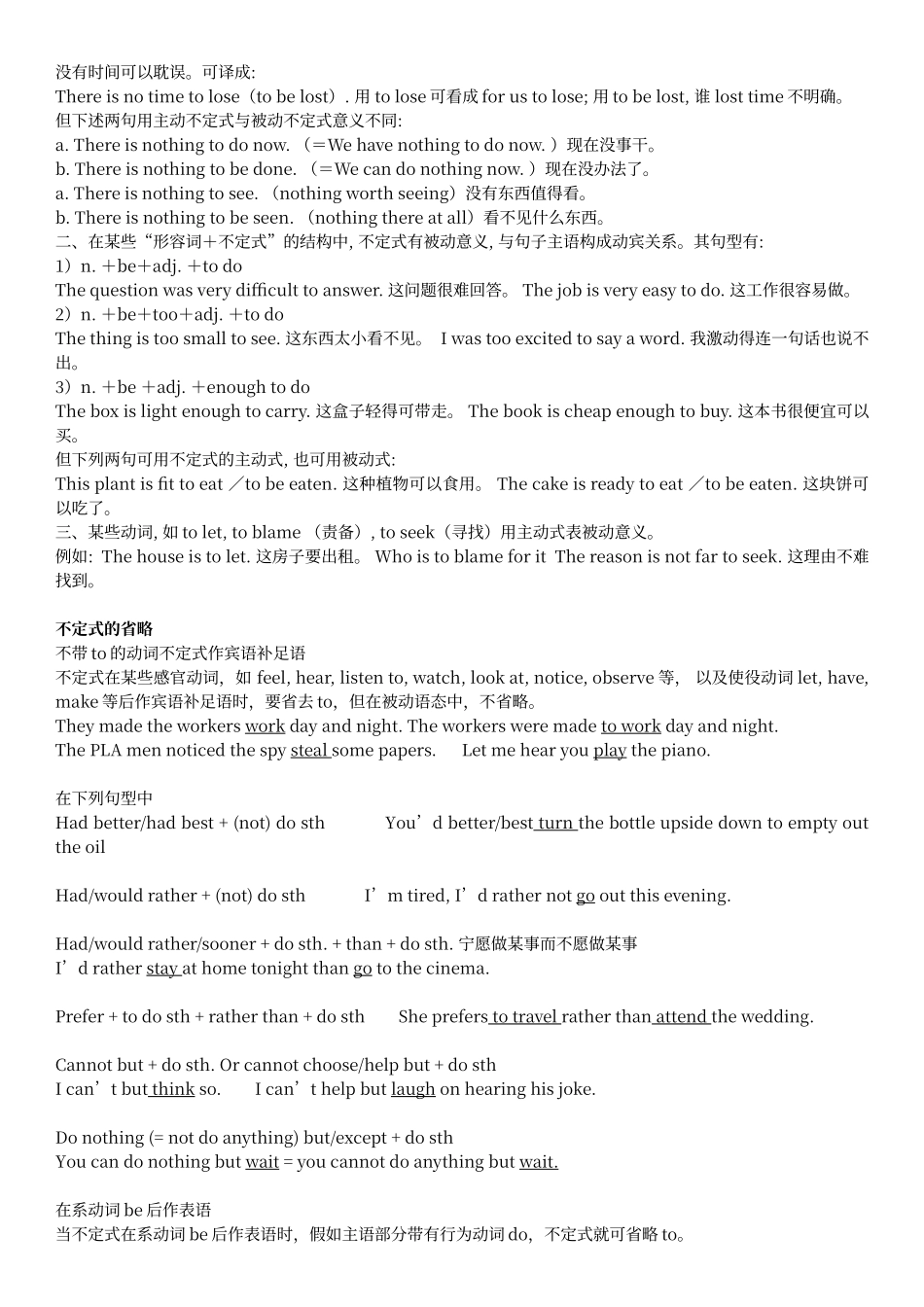动词不定式归纳定义:不定式的 to 和介词 to 需要被区分开,不定式的 to 后接动词原形,介词 to 后接名词、代词或动名词。不定式作动词宾语He decided to invite all of his classmates to attend the holiday at the beach. 不定式作宾语He promised not to tell anyone about it. 假如宾语有自己的补语,则常用 it 作形式宾语,而把真正作宾语的不定式放在后面放在后面,常带有形式宾语的动词有:believe. Consider. Feel. Find. Know. Make . regard例: we think it important to obey the laws. √ we think to obey the laws is important. ×I know it impossible to finish so much homework in a day.不定式作介词宾语当介词 but、except、besides 前面有行为动词 do 及其各种形式时,介词后面的不定式可以省略 to,否则不省略。What do you like to do besides play football We have no choice but to wait.个别介词可以用“疑问词+不定式”作宾语The boy has him own idea of how to finish it.不定式起形容词作用作定语不定式作定语用来修饰名词或代词,置于它所修饰的词后,而且放在其他后置定语的后面。同时与它所修饰的名词或代词形成逻辑上的动宾关系或主谓关系。He always has a lot of meetings to attend. 不定式 to attend 和名词 meetings 形成动宾关系The next train to arrive was from Seattle. To arrive 和 train 形成主谓关系Do you have anything interesting to read假如作定语用的不定式是不及物动词,就要加上介词,使被修饰的这个词成为这个介词的逻辑宾语。He is looking for a room to live in. to live in a room. A room 是介词 in 的宾语。Please pass me some paper to write on.上述不定式后加介词时,一般不能省略介词,但当修饰 place,time,way 时,介词可以省略。He has no money and no place to live (in). The time to arrive is 8 o’clock. (at)I think the best way to travel is on foot.不定式作定语时,用主动语态表示被动含义的情形一、在某些固定句型中, 动词不定式作定语, 用主动形式表被动意义。1)have(give, show)sth. to do在这种句型中的不定式与前边的名词有动宾关系, 又和...


